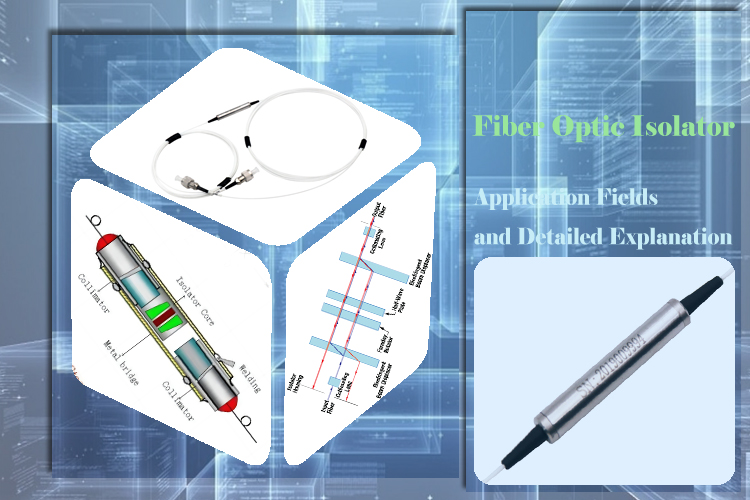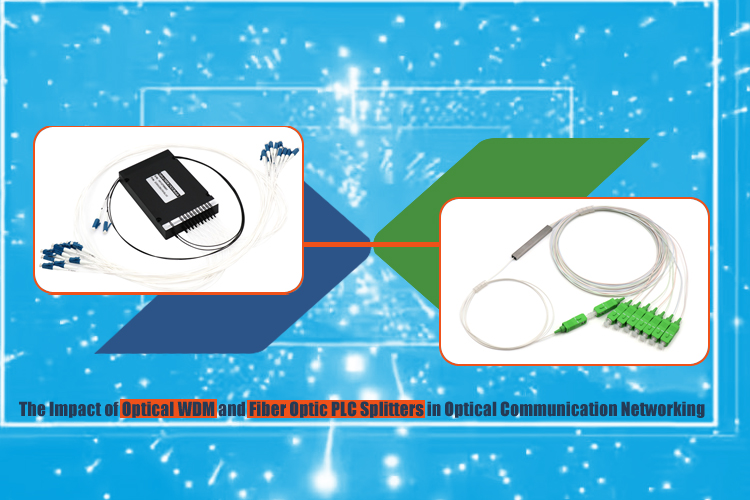Major Application Fields and Detailed Explanation of Fiber Optic Isolator
As technology advances, the demand for high-speed data transmission and communication increases. Fiber optic isolators play a vital role in ensuring that optical signals are transmitted efficiently and securely. In this article, we will discuss the major application fields of fiber optic isolators and provide a detailed explanation of how they work.

What is a Fiber Optic Isolator?
A fiber optic isolator is an optical device that allows light to travel in one direction while blocking it in the opposite direction. It is a non-reciprocal device that uses Faraday rotation to achieve this function. A Faraday rotator is a material that rotates the polarization of light passing through it by 45 degrees. By placing a Faraday rotator in between two polarizers, one can create a unidirectional optical path.
Major Application Fields of Fiber Optic Isolators
Telecommunications: Fiber optic isolators are widely used in telecommunications to prevent back-reflections from optical amplifiers and other network components. Back-reflections can cause signal degradation and even damage to network equipment. By using isolators, telecommunication networks can operate more efficiently and with less downtime.
Medical Equipment: Medical equipment such as laser systems and endoscopes use fiber optic isolators to prevent back-reflections that can damage sensitive equipment. They are also used in fiber optic sensors to isolate the sensing element from the light source, allowing for accurate measurements.
Military and Aerospace: Fiber optic isolators are used in military and aerospace applications to prevent unwanted signals from interfering with critical communication systems. They are also used in navigation systems to isolate the output of sensitive sensors from the input signals.
Industrial Applications: In industrial applications, fiber optic isolators are used to protect sensitive equipment from electromagnetic interference (EMI). They are also used in automation systems to isolate control signals from power circuits.
Detailed Explanation of Fiber Optic Isolator
A fiber optic isolator consists of three main components: a Faraday rotator, two polarizers, and two fiber pigtails. The Faraday rotator is placed in between the two polarizers, and the fiber pigtails are connected to the input and output ports of the isolator.
When light enters the isolator through the input port, it passes through the first polarizer and into the Faraday rotator. The Faraday rotator rotates the polarization of the light by 45 degrees before passing through the second polarizer and out of the output port. The second polarizer only allows light with the correct polarization to pass through, effectively blocking any light that has been reflected back towards the input port.
Conclusion
Fiber optic isolators are essential components of modern communication systems. They play a crucial role in preventing back-reflections, protecting sensitive equipment, and ensuring signal integrity. By understanding the major application fields and detailed explanation of fiber optic isolators, you can make informed decisions when selecting the right isolator for your specific application.
Keywords: fiber optic isolator, Faraday rotator, polarization, telecommunications, medical equipment, military, aerospace, industrial applications, insertion loss, wavelength range.
FAQs
Q1. What is the difference between a fiber optic isolator and a circulator?
A fiber optic circulator is similar to an isolator but has three ports instead of two. It allows light to travel in a circular path, allowing multiple inputs and outputs to be connected simultaneously.
Q2. What is the insertion loss of a fiber optic isolator?
The insertion loss of a fiber optic isolator is typically less than 0.5 dB.
Q3. Can fiber optic isolators be used in single-mode and multi-mode fiber systems?
Yes, fiber optic isolators can be used in both single-mode and multi-mode fiber systems.
Q4. What is the wavelength range of a fiber optic isolator?
The wavelength range of a fiber optic isolator depends on the specific model but typically ranges from 1300 nm to 1625 nm.
Q5. How do I choose the right fiber optic isolator for my application?
The right fiber optic isolator for your application depends on several factors, including the wavelength of your system, the power level of your signals, and the connector type you need. Consult with a fiber optic specialist for assistance in selecting the right isolator.

 The Impact of Optical WDM and Fiber Optic PLC Splitters in Optical Communication Networking
The Impact of Optical WDM and Fiber Optic PLC Splitters in Optical Communication Networking
 Unlocking the Future: How 5G Powers the Development of Emerging Technologies
Unlocking the Future: How 5G Powers the Development of Emerging Technologies
 The Future of Fiber Optic Communication Network Architecture: Evolution and the Role of SDON Technology
The Future of Fiber Optic Communication Network Architecture: Evolution and the Role of SDON Technology
 What opportunities and challenges does free-space optical communication technology face?
What opportunities and challenges does free-space optical communication technology face?